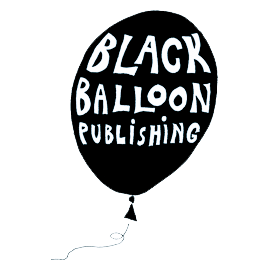
When I was young, I had a vendetta against the word “or.” “It makes you sound undecided,” I told a friend, after reading her high school English papers. “Use ‘and.’ ‘But’ also works.” It wasn’t that I disliked the word per se; I just thought that conjunctions didn’t need to be used so much.
Four years later, one of my professors called me out on my predilection for closing lists without conjunctions. “You’re fond of asyndeton,” and she typed the word. She recited Aristotle’s thoughts on the technique in hisPoetics, and gently suggested that asyndeton was perhaps most successful if used sparingly. Churchill’s oratory aside, she was absolutely right. So I told myself to leave the conjunctions in, although I did keep a safe distance from “or.”
Then I read Ben Lerner’s Leaving the Atocha Station. Nominally the story of a young poet living in Spain on a fellowship, the novel rests on uncertainty and consciousness rather than any particular plot. Reading of the narrator's struggles to understand and respond to the Spanish spoken around him, I noticed how he used “or” as a way to juggle many possible meanings: "She described the death of her father when she was a little girl, or how the death of her father turns her into a little girl whenever she thinks of it..."
Lerner discussed this in a BOMB interview: "Yes, “or” is an important word in the book, especially in those scenes where Adam Gordon can’t tell if he’s following the Spanish of an interlocutor, and so, instead of simply failing to understand, understands more than one possible meaning at a time ... Hearing a Spanish sentence as X_ or _Y allows him to keep his exchanges from becoming actual, to keep them in the realm of the virtual."
“Or” as a marker of uncertainty, yes—but Adam Gordon, the narrator, shifts the need for actuality and certainty onto his readers and listeners. The premise of the novel is that the narrator is constantly plagued by the need to feel authentic and transcendent; his intentional use of “or” forces other people to make that decision for him. He lets himself live in uncertainty.
Is “or” the conjunction for our time? Adam Gordon drowns in polysyndeton in the wake of the 2004 Madrid train bombings—an event many people grieved over as on 9/11. The words I remember from that time, though, were authoritative. On the radio, people reread Auden’s “September 1, 1939,” where Auden memorably uses “or” to oppose: “We must love one another or die.” The conjunction didn't seem uncertain at all, actually.
“Or” seems less definitive, less divisive now than it did in 2001 or 1939. Robyn Cresswell pinpoints a contemporary, perhaps more honest direction in his appreciation of Thomas Sayers Ellis’s “Or,”: “The poem begins, as I read it, by riffing on the either/or logic ... But it quickly ramifies into geography, history, poetics.” Perhaps “or” isn’t quite so terrible; maybe it’s as a way of conjoining many different coexisting possibilities, but without rejecting any of them or forcing us to choose.
Image credit: http://wandahamilton50.com

You know what’s better than coming up with New Year’s Resolutions? Adopting an obsessive compulsive disorder and disguising it as art.
As someone who spent the first two days of 2012 spending more than she could afford on food and alcohol, I can support the gesture of giving significant slack to your best intentions, championed here by Gothamist. Why should I be ashamed of my undesirable behavior when I can justexpect less of myself, as Oprah suggests? But to be honest, I’m just not interested in improvements that are so damned reasonable. Achievable resolutions feel like the boring tedium of becoming someone who is well-adjusted.
In my quest for a little New Year’s something to tickle my fancy—to take advantage of the promise and optimism inherent in a brand new year—I ran across a tidbit in Ruth Franklin’s Literary Resolutions in the New Republic that left me utterly inspired. Peter Dreher is an artist who paints the same water glass every day and now has over 2,500 paintings of this water glass. This exercise has incredible artistic and philosophical consequences, much of which is discussed in this interview with Lynne Tillman over at BOMB.
For me, the repetition and the obsessive nature of the exercise (the water glass is always on the same white table in a white room; the perspective and frame are uniform) make the perfect grounds on which to perform awesome, if not meaningful, resolutions.
Instead of resolving to keep in better touch with family and friends, why not resolve to write a letter every day to the same person you don’t know very well? Instead of resolving to hear more music, why not resolve to listen to the same song every day at the same time of day? Instead of eating healthier, why not try to draw a piece of crumpled white paper that you then re-crumple and draw again the next day?
The possibilities are endless. What’s important is to do something obsessively, with precision and care to maintain a particular sameness, every day. The accumulation, whether it be of particular objects or simple experience, would inevitably reveal something. And even if the exercise fails artistically, there is still the pure satisfaction of daily work.
Photo: Monique Knowlton Gallery via bombsite.com






 A Black Balloon Publication ©
A Black Balloon Publication ©